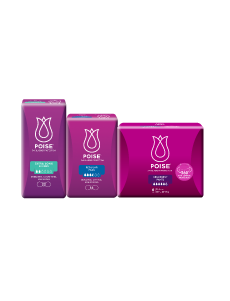Bladder weakness due to Pregnancy
The female body goes through a million wonderful, crazy and mysterious changes during pregnancy.
As your baby grows, it puts pressure on your bladder, so a sneeze, cough or even a hearty laugh can tip the scales for you to experience bladder control loss.
During pregnancy, any soon-to-be mother's body requires more blood and nutrients than usual. This explains why pregnant women have strange cravings! However, it also means you get thirsty, so it is important to drink more. For some pregnant women, the hormones racing around in your body can slightly change the signals from your bladder to brain, and the urgent feeling of urinating can come on very quickly. With a full bladder from drinking the extra fluid, bladder weakness can often occur.
Bladder Weakness is a common condition while pregnant.
Most pregnant women experience bladder weakness in the third trimester, when the baby has grown so much they are pressed up against your bladder. This not only puts more pressure on it, but also reduces the amount of urine the bladder can hold, making you want to urinate more often. All the extra weight pressing down on your pelvic floor muscles weakens them, so consequently, bladder control loss happens.
Be sure to talk to your doctor or health care professional as they will help you to control and manage your bladder weakness appropriately during your pregnancy.
See our POISE® products on how it could help pregnant women manage light bladder leakage.
Incontinence can affect women of all ages. POISE® liners and pads are specifically designed to help women easily manage bladder leakage in everyday life. Try now!
Where To Buy
These articles might also be interesting to you
Kimberly-Clark Singapore makes no warranties or representations regarding the completeness or accuracy of the information. This information should be used only as a guide and should not be relied upon as a substitute for professional medical or other health professional advice.
Sources
Arnold, J., McLeod, N., Thani-Gasalam, R. and Rachid, P. (2012). RACGP - Overactive bladder syndrome –management and treatment options. [online] Racgp.org.au. Available at:
http://www.racgp.org.au/afp/2012/november/overactive-bladder-syndrome/
[Accessed 6 Apr. 2015].
Bladderclinic.com.au, (2011). Overactive Bladder (OAB). [online] Available at:
http://www.bladderclinic.com.au/bladder/overactive-bladder-oab [Accessed 6 Apr. 2015].
Cherney, K. (2013). Home Remedies for Overactive Bladder. [online] Healthline. Available at:
http://www.healthline.com/health/overactive-bladder/home-remedies#Overview1
[Accessed 6 Apr. 2015].
Eilber, MD, K. (2015). What Is The Difference Between A Small Bladder And An .... [online] EmpowHER. Available at:
http://www.empowher.com/overactive-bladder/content/what-difference-between-small-bladder-and-overactive-bladder-dr-
[Accessed 6 Apr. 2015]
Maher, MD, C. (2003). Welcome to Chris Maher's Urogynaecology Australia Web Site. [online] Urogynaecology.com.au. Available at:
http://www.urogynaecology.com.au/Overactive.htm [Accessed 6 Apr. 2015].
Siamak N. Nabili, M. (2014). Overactive Bladder: Facts for Men, Women, and Children. [online] MedicineNet. Available at:
http://www.medicinenet.com/overactive_bladder/article.htm [Accessed 6 Apr. 2015].
Tidy, MD, C. (2013). Overactive Bladder Syndrome, Bladder Problems | Health | Patient.co.uk. [online] Patient.co.uk. Available at:
http://www.patient.co.uk/health/overactive-bladder-syndrome [Accessed 6 Apr. 2015].
Webmd.com, (2014). Overactive Bladder in Children (Child Incontinence): Signs, Causes, and Treatment. [online] Available at:
http://www.WebMD.com/urinary-incontinence-oab/overactive-bladder-in-children
[Accessed 6 Apr. 2015].
Canceraustralia.gov.au, (2019). Bladder cancer statistics in Australia | Bladder Cancer. [online] Available at:
https://bladder-cancer.canceraustralia.gov.au/statistics
[Accessed 6 Jun. 2019].
Other urinary incontinence causes









